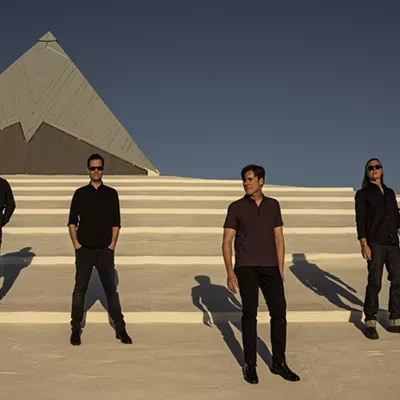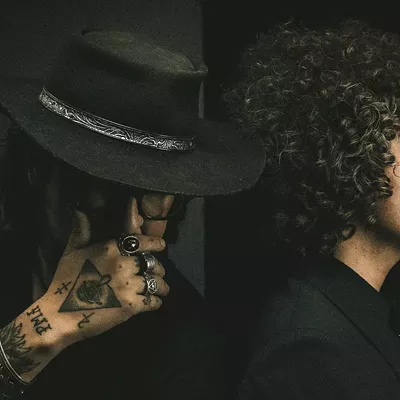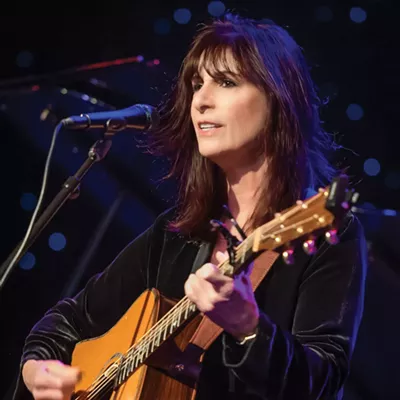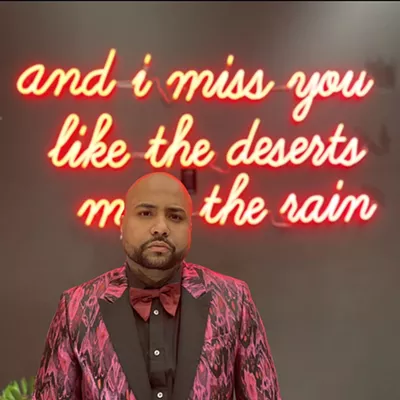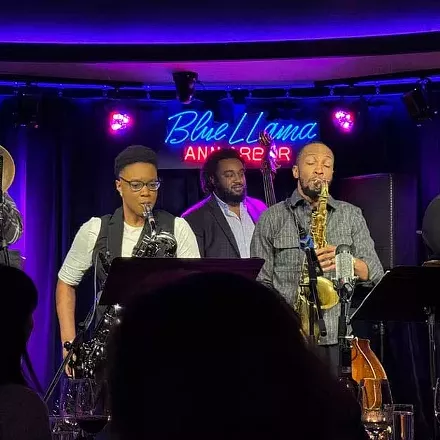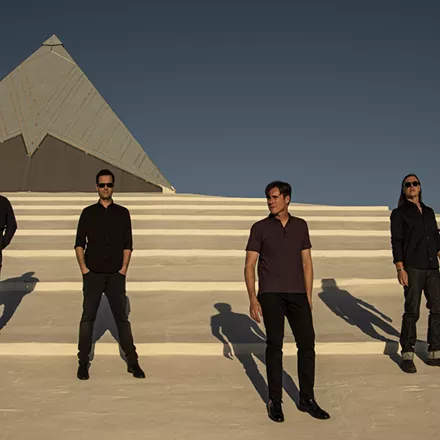When you do finally grasp that you're listening to instrumentals, it won't make a whit of difference.
The Octopus Project makes music that is fun, but not insubstantially so. These days, when musical lines are pretty evenly split between crassly commercial and dryly academic, that's refreshing.
Layering sound on sound with analog and digital synthesizers, glockenspiels, strings and horns, marimbas, guitars, drums, theremin and samplers, the band amasses a mesmerizing sea of sound into which listeners are almost compelled to immerse themselves. One critic accurately described the Octopus Project as knowing the difference between "dance music" and music that makes you want to dance.
The Octopus Project will visit Tucson to play on Tuesday, Aug. 12, at Club Congress.
Toto Miranda, one of the group's founding members, understands why some fans might find happiness in the Octopus Project's music, and he's grateful they do, but he sees it slightly differently.
"I guess I would characterize our music as more or less energetic, or maybe colorful," Miranda said in a recent phone interview. "But that can be happy or fun. Certainly, the result can be seen as all very positive and affirmative."
In 1999, Miranda joined with friends Josh Lambert and Yvonne Lambert (who are married) to form the Octopus Project. They'd all known each other since high school, and had played in different bands in and around the Austin scene. Recent recruit Ryan Figg completes the quartet, who trade instruments constantly during the making and playing of their music.
Miranda says the Octopus Project never set out to play purely instrumental music. It just happened that way.
"I guess we never talked about keeping the Octopus Project instrumental," he said. "That was never the idea. But none of us were really focusing on writing lyrics or singing. In our other bands, there had always been somebody else in the band whose responsibility that was."
Without relying on vocals, Miranda said the band feels a lot more freedom: "That really opens up a lot of musical space, and we can do a lot of different things with the instruments than if you are tied to song lyrics."
The Octopus Project is known for integrating high-tech and lo-fi technology into the process of making music, whether it's on stage or on a recording. Again, that's not really calculated, but simply the way things have worked out.
"I could probably come up with a good philosophical basis for that after the fact, but it really comes down to the fact that we want to make the best music we can, and we will use whatever tools we have at hand," Miranda said.
"Whatever we can do to create a wider range of sound and texture, we'll try--you know, like getting a totally fucked-up keyboard sound, or using an effect on the drums. It's all about putting sounds together to make the best use of them."
One of the most intriguing and striking sounds in the Octopus Project bag of tricks is the theremin, which is played by Lambert.
Created by the Russian inventor Léon Theremin in 1919, this early electronic instrument is usually built to resemble a wooden cabinet with two metal antennae jutting out. The device generates an electrical field that the musician interrupts with his or her hands; one antenna controls pitch, the other volume.
The theremin often has been used to create spooky sounds on movie soundtracks, such as Spellbound and The Day the Earth Stood Still, and many rock and pop bands have incorporated its use, most notably the Beach Boys, the Rolling Stones and Led Zeppelin, as well as some classical and avant-garde composers.
"It takes a while to get good at it; the learning curve is pretty steep," Miranda said. "But from what I gather from watching Yvonne, there's something of a technique that has developed and is evolving, in terms of hitting pitches and getting certain tones from the instrument.
"The biggest challenge is we have to be careful on stage and aware of what's going on in the space around the theremin when Yvonne is playing. You can't go walking in between her and the instrument, or it will change the sound."
The Octopus Project's latest release is Hello, Avalanche, which was released last year. It is the group's third album, not including The House of Apples and Eyeballs, a 2006 collaboration with the psychedelic band Black Moth Super Rainbow.
Diverging from tradition, the band actually closes its new album with a song titled "Queen" that features quiet singing. But the lyrics--which hint that the song may be a playful lullaby for royal personages--seem to naturally grow from the song's melody, burbling out of a synthesizer line and accompanied by a gentle hip-hop-style marching rhythm.
It's been almost a year since Hello, Avalanche was released. Miranda says progress is being made on a follow-up, but slowly: "In the sense that we're always cranking out ideas, yes, we're thinking about the next album.
"But the part where it gets difficult is when you take that one little idea, or a couple of them, into the studio, and you try to develop them into songs. That second stage always seems a little hard. But it will happen, probably when we get home from the current tour."

